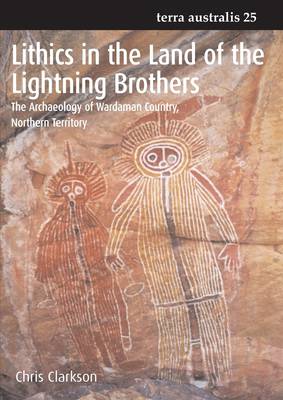
- Afhalen na 1 uur in een winkel met voorraad
- Gratis thuislevering in België vanaf € 30
- Ruim aanbod met 7 miljoen producten
- Afhalen na 1 uur in een winkel met voorraad
- Gratis thuislevering in België vanaf € 30
- Ruim aanbod met 7 miljoen producten
Zoeken
Lithics in the Land of the Lightning Brothers
The Archaeology of Wardaman Country, Northern Territory
Chris Clarkson
€ 69,45
+ 138 punten
Omschrijving
Lithics in the Land of the Lightning Brothers skilfully integrates a wide range of data-raw-material procurement, tool design, reduction and curation, patterns of distribution and association-to reveal the major outlines of Wardaman prehistory. At the same time, the book firmly situates data and methods in broad theoretical context. In its regional scope and thorough technological approach, this book exemplifies the best of recent lithic analysis and hunter-gatherer archaeology. Any archaeologist who confronts the challenge of classifying retouched stone tools should consult this volume for a clear demonstration of reduction intensity as a source of size and form variation independent of "type." Yet the demonstration is not merely methodological; Clarkson shows how the measurement of reduction intensity informs analysis of technological diversity and other cultural practices. In Clarkson's hands, Wardaman prehistory emerges as a particular record of the human past. Yet the book is also a case study in prolonged cultural response to environmental conditions and the way in which cultures persist and reproduce themselves over long spans of time. The result is an analytical tour de force that will guide hunter-gatherer archaeology in Australia and elsewhere for years to come.
Specificaties
Betrokkenen
- Auteur(s):
- Uitgeverij:
Inhoud
- Aantal bladzijden:
- 240
- Taal:
- Engels
- Reeks:
- Reeksnummer:
- nr. 25
Eigenschappen
- Productcode (EAN):
- 9781921313288
- Verschijningsdatum:
- 1/09/2007
- Uitvoering:
- Paperback
- Formaat:
- Trade paperback (VS)
- Afmetingen:
- 210 mm x 297 mm
- Gewicht:
- 784 g

Alleen bij Standaard Boekhandel
+ 138 punten op je klantenkaart van Standaard Boekhandel
Beoordelingen
We publiceren alleen reviews die voldoen aan de voorwaarden voor reviews. Bekijk onze voorwaarden voor reviews.








